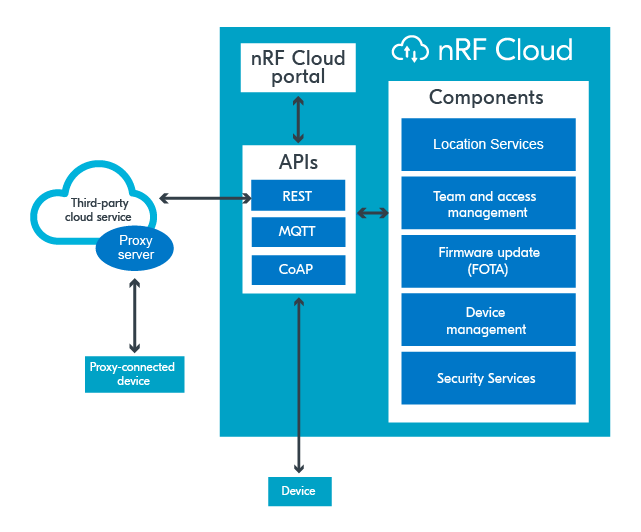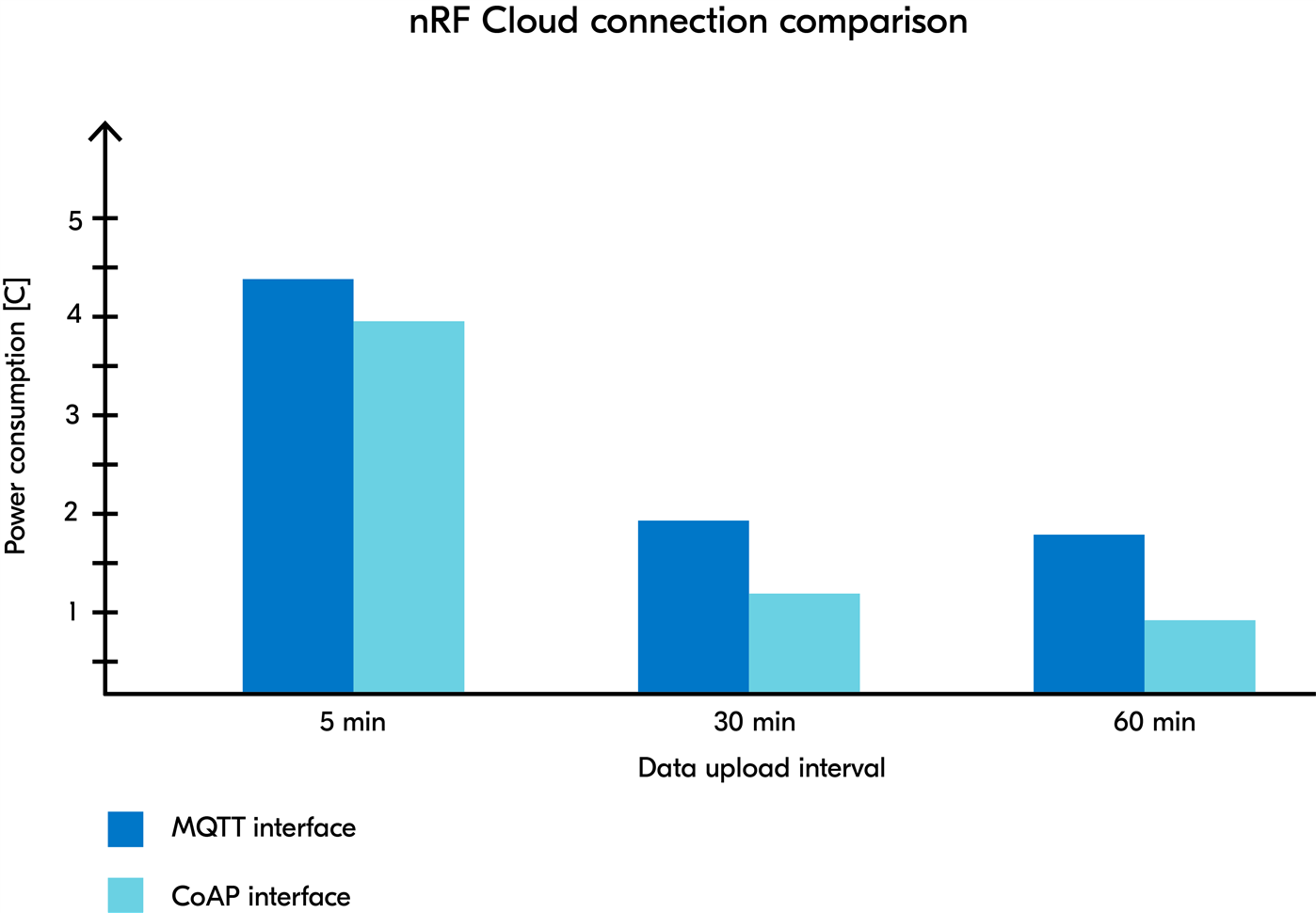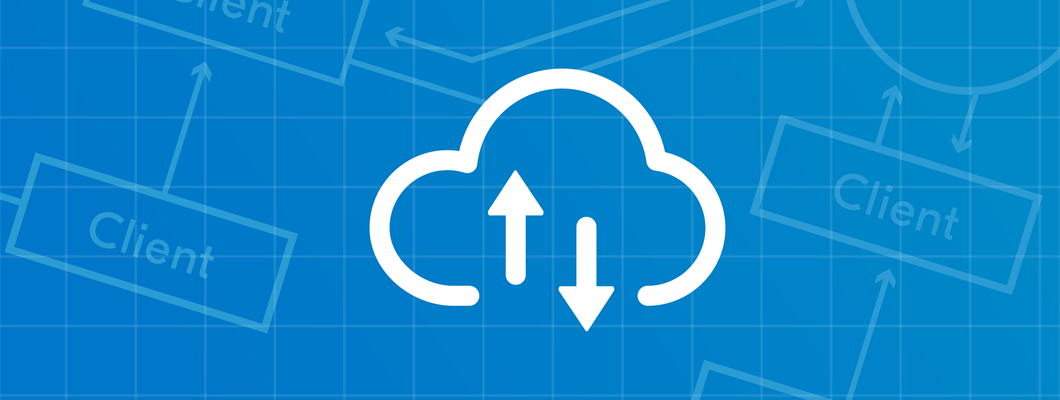Low power is one of the cornerstones of Nordic’s cellular IoT solution. The nRF91 Series is built from the ground up with ultra-low power consumption in mind, and the nRF Connect SDK provides applications and samples that optimize the device's performance and power consumption usage. On the other side of the connection, our nRF Cloud platform provides location services, firmware-over-the-air updates, and other features to increase your device's batter life further.
This is why we are excited to announce a new low-power addition to our nRF Cloud platform, the nRF Cloud CoAP (Constrained Application Protocol) interface. The CoAP interface is a future-proof addition to nRF Cloud, extending nRF Cloud services to other technologies. The CoAP interface enables efficient communication while lowering the device’s power consumption, memory usage, and operator fees. Introducing the CoAP interface, alongside our existing TCP-based interfaces, allows you to choose the option best suited for your application needs.
This blog post will discuss the new features of the CoAP interface and the benefits of using CoAP for device-to-cloud communication with nRF Cloud. We will also give you an overview of nRF Cloud's interfaces and how to choose which one to use for your application. Lastly, we will present power consumption measurements of an nRF9160 DK connection to nRF Cloud using both the CoAP and MQTT interface.
Table of Contents
Why CoAP?
So why have we added support for CoAP? And why should you use CoAP in your device-to-cloud communication? The CoAP interface brings less power consumption usage, lower overall data transmission and a reliable connection for both LTE-M and NB-IoT. Let’s look deeper into how the CoAP interface enables all these things.
The Constrained Application Protocol (CoAP) is a UDP-based transport protocol developed for constrained devices. Since CoAP works on UDP, it is lightweight for the device as there is no end-to-end connection signaling required, as there is in TCP. Although UDP is unreliable since it does not force acknowledgment, reliability can be achieved through the CoAP protocol. CoAP provides the flexibility to implement retry logic and reliability based on your use-case needs.
Reduced power consumption for secure connections
In a cellular network, unless you pay for a fixed IP, your device is assigned a dynamic IP address from the network. And since the secure DTLS sessions are tied to a device’s IP address, this means devices either need to maintain the connection, or they are unable to keep the same DTLS session for long periods of time, requiring a DTLS handshake every time it wakes up to send some data.
To solve this, the nRF Cloud CoAP interface implements the DTLS 1.2 Connection ID (CID) extension (RFC 9146). This significantly reduces the DTLS handshakes, saving kilobytes of data each time a device connects.
The basic idea is that the established DTLS connection is stored on both sides with a Connection ID, which is then used as the identifier in upcoming connections. This removes the DTLS bind to the IP address, and the device does not need to maintain the connection or IP address. With the Connection ID, the device can send requests only when needed, bringing power usage down while only requiring a short radio-on period.
The image below shows a simplified system flow between a device and nRF Cloud with and without using CID.

Smaller message size with CBOR
The nRF Cloud CoAP interface also implements Concise Binary Object Representation (CBOR) (RFC 8949). CBOR is a data format for constrained devices that enables smaller client code and message sizes. This reduces the overhead in packets, lowering the overall transmission of data, which allows you to save on operator fees. It also provides a structured, self-explaining format for binary data transfer. In short, it is efficient and easy to use.
Reliable for both LTE-M and NB-IoT
Using TCP-based protocols with NB-IoT can be problematic since NB-IoT is not required to support TCP, according to its 3GPP specification. Therefore, introducing the CoAP interface, which is a UDP-based protocol, enables the utilization of NB-IoT features and a reliable connection to nRF Cloud, regardless of which cellular technology you are using.
nRF Cloud interfaces
For device-to-cloud communication, nRF Cloud provides the TCP-based MQTT interface and the UDP-based CoAP interface.
So, how do you know which interface to choose? This all depends on the needs of your application.

As we have highlighted in this blog post, CoAP uses UDP, which is not as reliable as the TCP-based connection that the MQTT interface uses. However, this also results in higher power consumption as MQTT has to maintain the connection between the client and the broker.
While CoAP has a one-to-one communication model, MQTT supports multiple connected nodes simultaneously. MQTT is better for event-based systems, where you have multiple nodes interacting based on, for instance, their sensor values. CoAP is more suited for systems that monitor state changes, where you can transfer state information between client and server.
If your devices need to send data continuously, then MQTT is the best choice. However, if your device can sleep between sending data, CoAP is the better choice.
Power consumption measurements
We have measured the power consumption that an nRF9160 DK running modem firmware 1.3.5 uses when connected to nRF Cloud using both the CoAP and the MQTT interface. The device establishes a (D)TLS connection with nRF Cloud, then goes into Power Saving Mode (PSM) and wakes up intermittently to send data to the cloud. In the CoAP case, it uses CID to avoid a new DTLS handshake for the session, while in the MQTT case, the device sends MQTT keepalive messages every 20 minutes to keep the connection alive.
We tested sending data every 5 minutes, 30 minutes, and 60 minutes for 3 hours. The results are presented in the table below.

As you can see, the less frequently the data is uploaded, the more power-saving the CoAP interface brings.
Please note that these are just one set of measurements in one network, and other networks will give different numbers.
Testing the CoAP interface
If you would like to test the CoAP interface, nRF Connect SDK tag v2.4.99-dev1 contains the nRF Cloud multi-service sample, which demonstrates a connection to nRF Cloud over the nRF Cloud CoAP library.
Your nRF9160 device must be running modem firmware version 1.3.5 or above to benefit from the power savings provided by DTLS Connection ID.
Closing
With the introduction of the nRF Cloud CoAP interface, you can now interface with nRF Cloud using either a TCP-based or UDP-based protocol. Allowing customers to select whichever option is best suited for their application needs.
The nRF Cloud CoAP interface enables you to:
-
Gain power savings from a short radio-off period as CID removes the need for a heavy DTLS handshake.
-
Save memory in the device with the CBOR format
-
Save operator fees with smaller message sizes and no heavy DTLS handshakes
Feel free to like this blog post and leave a comment telling us about your experience with the new CoAP interface



Top Comments